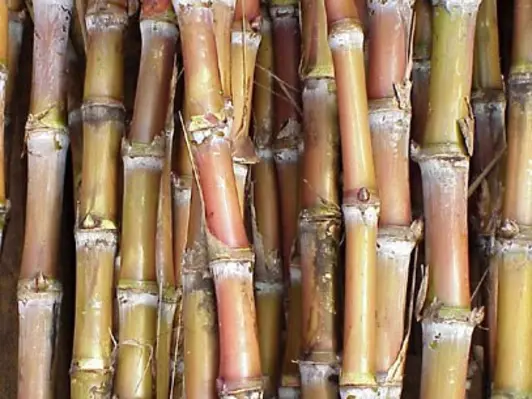Faced with import tariffs, difficult trade policies, production woes and tough competition from other sugar-producing countries, it is indeed a rough road ahead for the Philippine sugar industry.
Like a drama series, the sugar industry in the Philippines is one tale that is full of twists and turns. The country, which was once a dominating force in the global export market, beginning mid-nineteenth century up to the mid-1970s, unexpectedly became a major importer of the commodity in the 1980s until now. According to observers, the sugar sector’s twist of fate from being the world’s top supplier to becoming an importer was due to bad agricultural policies and poor production schemes done by previous governments. Today, stakeholders are striving to reclaim the sector’s once glorious throne but they admit it isn’t going to be easy.
The bittersweet history
According to the Food and Agriculture Organization (FAO), the Arab traders were believed to have introduced sugarcane to the Filipino farmers even before the country was colonized by Spain. FAO also revealed that the culture of sugarcane as a commercial crop started in the 18th century and exports began in 19th century when the crop started to very well adapt to the local environment. By the 20th century, Philippine sugar industry was formally established and it began through the help of America wherein its increasing needs for sugar prompted them to fuel its planting expansion by installing new technologies and providing adequate financing to the local sugar cane farmers. With the US as a lucrative market during that period, the nascent of sugar as a top export commodity began to take off.
More than a crop, sugar also serves as a symbol for the Filipino elite known as the hacienderos. Unlike coconut, corn or rice, sugar cane can only be grown on large tracts of farmland called haciendas, hence, having a sugar cane plantation is a status symbol of affluence. Most of these hacienderos came from Western Visayas, particularly in Negros islands where the province accounts for 80 per cent of the country’s total sugar output.
The sector’s best heydays were during the 1950s and 1960s when the country was enjoying high quota trade with the US under the Laurel-Langley agreement. According to the US Library of Congress, the Philippines’ total sugar exports to the US was 25 to 30 per cent, double that of significant suppliers such as Dominican Republic, Mexico and Brazil.
According to the Philippine Partnership for the Development of Human Resources in Rural Areas (PhilDHRRA), the effects of the sugar boom in the country was that lands planted to sugar increased by ten folds. With the ownership and production beginning to concentrate on the rich families, PhilDHRRA reveals that sugar became of political interest and inevitably made sugar cane, along with corn and rice, on the list of political crops.
Seeing sugar’s major influence on socio-politics as well as for his financial gain, former Philippine president Ferdinand Marcos created the Philippine Sugar Commission (Philsucom) in 1974 to solely handle buying and selling of sugar at a time when prices were at a record high of 54 cents per pound. Headed by Marcos’ close associate Roberto Benedicto, Philsucom was the only authorized agency to set prices paid to planters and millers as well as purchase companies connected to the sugar industry. A bank was set up in 1978 and seven new sugar mills were constructed worth US$40 million per mill. With the seemingly smooth flow of Philsucom, the dictator thought that nothing could go wrong with his devious business scheme.
But few years after, global sugar went into crisis that sent prices tumbling to below production cost. To make matters worse, the Laurel-Langley agreement which gave the Philippines practically limitless preferential access to the US market expired, drastically plunging its massive exports. Despite the government’s efforts to save the sector from the crisis, the once vibrant sugar industry found itself mired from market distortions and unremitting price declines and the downward trend spiralled continuously.
After Marcos was ousted in 1986 in a people power revolt, losses between 1974 and 1983 were estimated to be between PHP11 billion to PHP14 billion. In an attempt to shore up the dying industry, President Corazon Aquino established the Sugar Regulatory Administration (SRA) to fully rehabilitate the sector such as dismantling the monopoly, privatize sugar mills and refineries and restore market forces. But there was one problem. Despite SRA’s powers to rebuild the sugar sector, it had no authority to buy, own or much less manage sugar marketing. According to Jose Maria Zabaleta, former chairman of the Philippine Sugar Millers Association, SRA’s seemingly contradictory policy from that of Philsucom resulted to daunting problems such as price fluctuations of raw sugar whereas Philsucom previously manages the price control. While SRA at times kept prices stable, it generally failed its duty totally take hold of market forces which usually dictate prices.
But the biggest blow was that the government thought it still has the competitive advantage to remain an exporter. According to Jose Maria Zabaleta of the Philippine Sugar Millers Association, the Preferential Tariff Agreement made in 1977 which allowed liberalization of sugar trade as well as lowering its tariffs in an attempt to penetrate more markets did not make any provisions to shield the domestic industry from either efficient exporters or the volatility of the world market. In 1990, believing that the country still had the grip in exports, the government offered a tariff reduction greater than most sugar producing countries during the Uruguay Round of General Agreement on Tariffs and Trade (GATT) which according to Zabaleta was truly ominous since little did the Philippines know that Thailand would embark on a major investment and development program for sugar and that Australia would take bold steps to further stimulate its already efficient industry.
By Gemma Delmo





